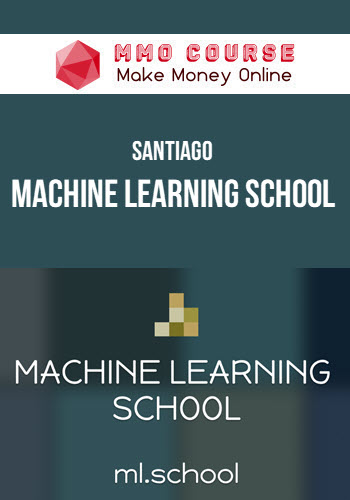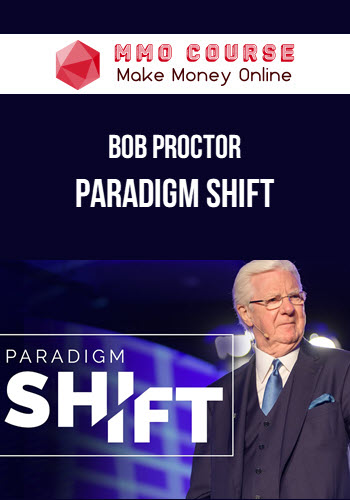Santiago – Machine Learning School
$425.00 $59.00
Delivery: Within 24 hours
Description
Santiago – Machine Learning School
Many people know how to train Machine Learning models.
Unfortunately, this is around 5% of the work required to build an end-to-end system.
This program will show you the other 95%.
Three things will happen when you finish this program:
You’ll have a solid understanding of most theoretical aspects concerning Machine Learning systems.
You’ll have experience building an end-to-end system using SageMaker. You’ll understand how to process data, train, tune, evaluate, deploy, and monitor models in a production environment. You’ll know a few tricks from somebody who spent many nights trying to figure these things out.
You’ll build connections with like-minded professionals working in the industry.
What You’ll Learn In Machine Learning School?
Session 1 – Production Machine Learning is Different
- What makes production machine learning different from what you’ve learned
- Unlearning what you think Machine Learning is and how to start thinking like an engineer
- Sampling strategies when collecting data. An introduction to nonprobability sampling, random sampling, stratified sampling, and weighted sampling
- Labeling strategies. An introduction to weak supervision, active learning, and the blessing of natural labels
- Building good features. An introduction to data imputation, standardization, and encoding
- The importance of splitting data and why you should always do it before transforming your data. How data leakage can destroy your models
- How to use pipelines to orchestrate machine learning workflows. Preparing a transformation pipeline, a training pipeline, and an inference pipeline
- A template architecture to solve some of the most critical aspects of any production machine learning system
- How to process incoming data automatically without having people work on weekends. Handling large amounts of data using Distributed Processing
- Understanding the SageMaker’s Processing Step and Processing Jobs
- A quick look into Data Wrangler for data preparation and feature engineering
Session 2 – Building a Model and the Training Pipeline
- Handling class imbalances and dealing with rare events. Choosing the right metric, sampling, cost-sensitive learning, and class weighting
- An introduction to data augmentation
- The first rule of Machine Learning Engineering and the reason you don’t want to use machine learning in the first place
- Building a model from simple heuristics to complex machine learning algorithms
- How to train a model when we can’t fit the data or the model in a single node. Distributed Training using Data and Model Parallelism
- Squeezing a bit more performance using Hyperparameter Tuning in a training pipeline
- How to track, recreate, and compare experiments. Tracking and versioning everything you need to go back in time
- Understanding SageMaker’s Training Step and Training Jobs
- Understanding SageMaker’s Tuning Step and Tuning Jobs
Session 3 – Model Evaluation and Versioning
- Why good models aren’t necessarily useful and useful models aren’t necessarily good
- Dealing with competing priorities when building machine learning systems. Decoupling objectives
- A different way to apply machine learning in the real world. Augmenting and creating instead of replacing
- Framing evaluation metrics to affect business performance
- Contextualizing evaluation metrics with a baseline. Human and random baselines, simple heuristics, and using existing systems for context
- Evaluating the robustness and fairness of a model. Techniques to identify biases
- Evaluating whether individual predictions are useful
- An introduction to backtests and how to use them to evaluate models
- The importance of versioning models
- Understanding SageMaker’s Model Registry
- Understanding SageMaker’s Condition Step
- Understanding SageMaker’s Model Step
Session 4 – Model Deployment and Inference Pipelines
- On-demand predictions versus batch inference. Understanding when to use each of them and how to combine them
- The disadvantages of batch inference and how to work around them
- Making models run fast. Model compression and an introduction to Quantization and Knowledge Distillation
- Deploying multiple models that work together. A comparison between dedicated and multi-model endpoints
- Designing an Inference Pipeline using the transformation pipeline we used to preprocess the data
- Understanding the SageMaker Lambda Step. A quick introduction to serverless functions
- The internal structure of a SageMaker Endpoint
- Customizing SageMaker models with a custom inference process
- Understanding SageMaker’s PipelineModel
Session 5 – Data Distribution Shifts and Model Monitoring
- An introduction to data distribution shifts
- Catastrophic predictions and the problem with edge cases
- Unintended feedback loops and how to work around them
- An introduction to covariate shift and concept drift. How can these changes happen
- How to identify data distribution shifts. An introduction to model monitoring
- How to respond to data distribution shifts. An introduction to defensive design, retraining, and the advantage of additional data
- Making the case for Continual Learning
- Understanding SageMaker’s Transform Step and Transform Jobs
- Understanding SageMaker’s QualityCheck Step
- Understanding SageMaker’s Data and Model Monitoring Jobs
Session 6 – Continual Learning and Testing in Production
- The importance of Continual Learning and why every company wants to be here
- The three main challenges when implementing Continual Learning
- A four-step plan to implement Continual Learning
- How to determine what data to use to retrain a model
- How frequently should we retrain a model
- Retraining strategies. Training from scratch and incremental training. Advantages and disadvantages
- Using offline evaluation and backtests during Continual Learning
- An introduction to Testing in Production
- Five strategies to test models in production. An introduction to A/B testing, Shadow deployments, Canary releases, Interleaving experiments, and Multi-armed bandits.
Sale Page: Santiago – Machine Learning School
Delivery Policy
When will I receive my course?
You will receive a link to download your course immediately or within 1 to 21 days. It depends on the product you buy, so please read the short description of the product carefully before making a purchase.
How is my course delivered?
We share courses through Google Drive, so once your order is complete, you'll receive an invitation to view the course in your email.
To avoid any delay in delivery, please provide a Google mail and enter your email address correctly in the Checkout Page.
In case you submit a wrong email address, please contact us to resend the course to the correct email.
How do I check status of my order?
Please log in to MMOCourse account then go to Order Page. You will find all your orders includes number, date, status and total price.
If the status is Processing: Your course is being uploaded. Please be patient and wait for us to complete your order. If your order has multiple courses and one of them has not been updated with the download link, the status of the order is also Processing.
If the status is Completed: Your course is ready for immediate download. Click "VIEW" to view details and download the course.
Where can I find my course?
Once your order is complete, a link to download the course will automatically be sent to your email.
You can also get the download link by logging into your mmocourse.hk account then going to Downloads Page.










